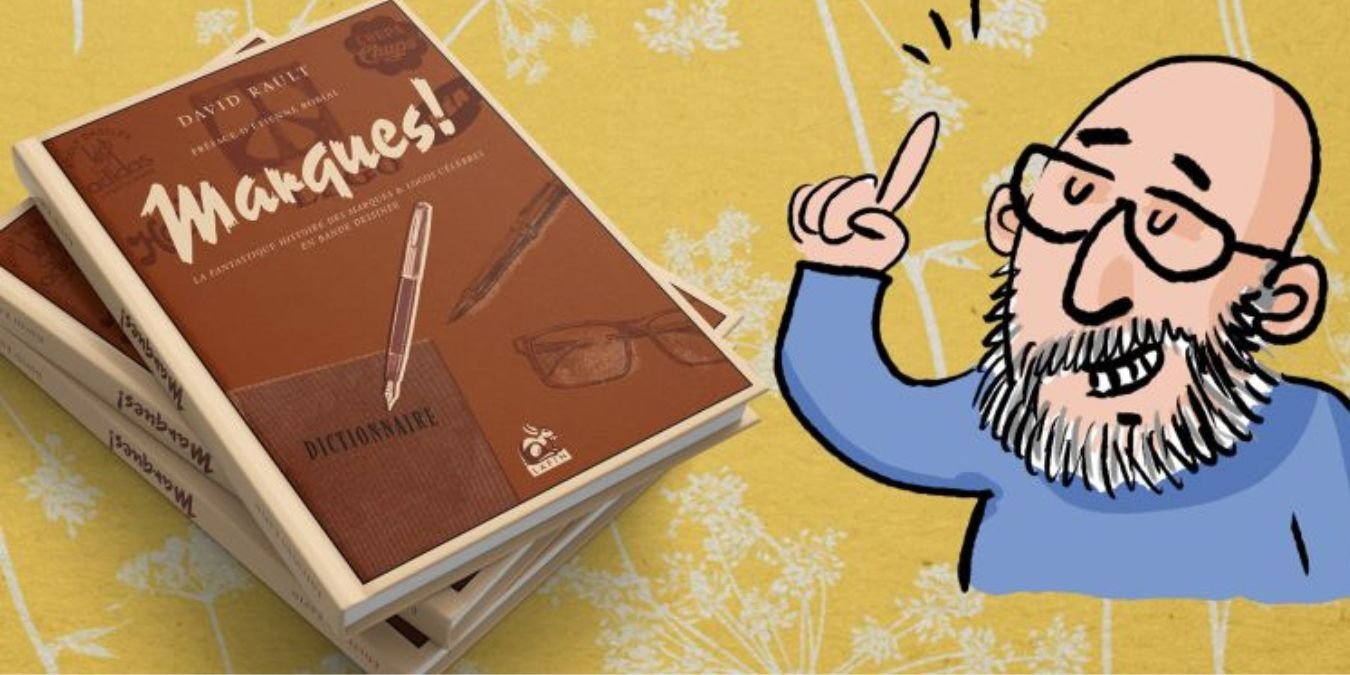You passed by it yesterday, you carry it with you today, and you will no doubt see it again tomorrow. Logos are part of our daily lives, but do we really know what their stories are? But how can we tell these stories while teaching readers something while entertaining them?
It was this challenge that David Rault took up Brandsan album that is in line with Characters where he dissects the lives of the creators of typographic characters. Étienne Robial, a great specialist in these matters, wrote the foreword.
David Rault is an essayist, graphic designer, journalist (no other -ist word, we assure you, but he has other occupations!), typography historian, and, more recently, comics writer. He entered the world of comics with a slightly different desire: to put language first.
Brands is part of a series of 4 albums: Charactersthe first in the series, focuses on typographic characters and their designers in comics. The third album will explore color and drawing, and in the fourth album David Rault will focus his study around book covers in 20th century France. IN Brands, the amazing story of famous brands and logos in comics, it traces the history behind the creation and invention of 35 brands and their logos, while analyzing their shape, typeface and format.
During an interview last March, Edward Gauvin, the translator of ABCD of typography one of the first albums in which Rault combines comics and typographic codes, recommended his 5 favorite European graphic novels. In this list was placed ABCD of typography and he explained that France had experienced a revival of the graphic nonfiction genre over the past 10 years. And in fact, we saw the emergence of many projects that were not located in fictional universes. In his interview, Edward Gauvin quotes Comic Magazine where we could see writers emerging with this desire to represent reality in comics. This is the case of Marion Montaigne or Christophe Blain, who are part of the documentary comics genre and who are interested in real and/or historical facts. These authors have a desire to produce information by exploring another side of this medium, namely comics.
This is a major challenge that these writers face because comics, for the majority of production since their origin, have been a fictional medium. So when David Rault takes the chance to create a cartoon that talks about logos, we can wonder what its reception will be. Well Brands was number one in sales on Amazon shortly after its release. And after reading it, we understand why! With this album, David Rault wins his bet without a doubt: to make a cartoon about the history of logos.
Iron-on logos
So make a cartoon about the history of logos, yes, but do it in an entertaining and fun way! Inside these 128 pages we learn more about these logos that we meet every day, but about which we know nothing.
It highlights the stories behind the creation of logos so well-known that they have become iconic like Levi’s, but also lesser-known logos like Leica. So, if the concept of logo has over time become a symbol that we associate with a brand, a logo is originally a graphic representation that makes it possible to identify something. IN BrandsDavid Rault explores logos such as the famous “peace” symbol.
He mentions the fact that the Tour de France logo hides a cyclist between the two “O” or, in more detail, traces the story behind the creation of the famous bitten apple. Each story of each logo is depicted on a double page in small, very colorful boxes.
In graphic albums based on real historical facts, the authors are obliged to use complex data. Another challenge emerges: handling this data in such a way that it is readable and makes readers want to turn the page. Brands performs well in this test as we read each little story very well and above all each piece of information fills the boxes well.
There really is something for everyone, which is why we can understand its success Brandsis that it can speak to any age group. In a very colorful and minimalist graphic style, David Rault really works sketch the seams on each logo. The drawing accompanies the topic in a very easy way and allows the readers to record information that he or she would find funny or surprising. David Rault chose a smaller format, the hardcover makes the book easier to transport and which really gets the look of a small dictionary about the history of logos that you could take everywhere.
It’s a fun and playful cartoon that, even if we don’t want to know more about the history behind logos, feeds our culture and spreads our curiosity. The album is organized by logo, so if there is one that interests you more than others, it is possible to return to it later like a small dictionary that you can easily dive into by moving from one page to the next to another on our interest in the history of a particular logo.
If you want to shine in society, or you are a fan of anecdotes that no one knows (except those who have read the album), you can do it by telling how Gabrielle Chanel chose her famous logo, but also know that its famous number 5 perfume is actually a reproduction of the Place Vendôme seen from above… But we won’t tell you everything, the rest you can discover in the album! David Rault even left blank pages so you can draw your own logo.
If you are interested, David Rault has a Tumblr account where he keeps his readers updated with news, his conferences or his signing sessions.
Brands, the amazing story of famous brands and logos in comics by David Rault, Rabbit
All the visuals are © the author and the publisher
